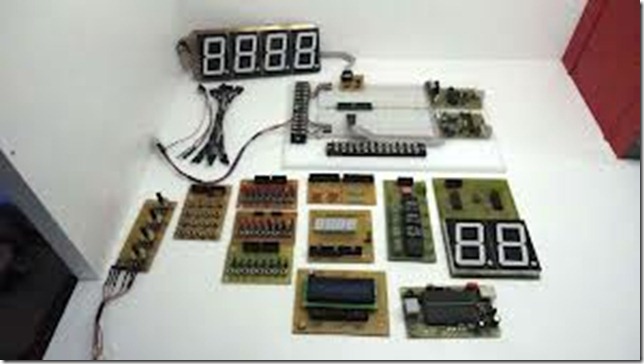Development Systems for Microcontrollers
What is needed to be able to apply a microcontroller to your product? That is, what package of hardware and software will allow the microcontroller to be programmed and connected to your application? A package commonly called a development system is required.
First, trained personnel must be available either on your technical staff or as consultants. One person who is versed in digital hardware and compute^ software is the minimum number.
Second, a device capable of programming EPROMs must be available to -test the prototype device. Many of the microcontroller families discussed have a ROMless version, an EPROM version, or an electrically erasable and programmable read only memory (EEPROM) version that lets the designer debug the hardware and software prototype before committing to full-scale production; Many inexpensive EPROM programmers are sold that plug into a slot of most" popular personal computers. More expensive, and more versatile, dedicated programmers are also available. An alternative to EPROMs arc vendor-supplied prototype cards that allow code to be downloaded from a host computer and the program run from RAM for debugging purposes. An EPROM will eventually have to be programmed for the production version of the microcontroller.
Finally, software is needed, along with a personal computer to host it. The :t minimum software package consists of a machine-language assembler, which can be supplied by the microcontroller vendor or bought from independent developers. More expensive software, mainly consisting of high-level language compilers and debuggers, is also available.
A minimum development system, then, consists of a personal computer, a plug-in EPROM programmer, and a public-brand assembler. A more extensive system would consist of vendor-supplied dedicated computer systems with attendant high-level software packages and in-circuit emulators for hardware and software debugging. In 1997 dollars, the cost for the range of solutions outlined here is from $1,000 to $5,000.
summary
The fundamental differences between microprocessors and microcontrollers are these:
• Microprocessors are intended to be general-purpose digital computers whereas microcontrollers are intended to be special-purpose digital controllers.
• Microprocessors contain a CPU, memory addressing circuits, and interrupt handling circuits. Microcontrollers have these features as well as timers, parallel and serial I/O, and internal RAM and ROM.
• Microcontroller models vary in data size from 4 to 32 bits. Four-bit units are produced in huge volumes for very simple applications, and 8-bit units are the most versatile. Sixteen- and 32-bit units are used in high-speed control and signal processing applications.
• Many models feature programmable pins that allow external memory to be added with the loss of I/O capability.
Questions
1. Name four major differences between a microprocessor and a micro-controller.
2. The 8051 has 40 pins on a dual inline package (DIP), yet the comparison with the Z80 microprocessor shows the 8051 has 58 pin functions. Explain this difference.
3. Name 20 items that have a built-in microcontroller.
4. Name 10 items that should have a built-in microcontroller.
5. Name the most unusual application of a microcontroller that you have seen actually for sale.
6. Name the most likely bit size for each of the following products:
Modem
Printer
Toaster
Automobile engine control
Robot arm
Small ASCII data terminal
Chess player
House thermostat
7. Explain why ROMless versions of microcontrollers exist.
8. Name two ways to speed up digital computers.
9. List three essential items needed to make up a development system for programming microcontrollers.
10. Search the literature and determine whether any manufacturer has announced a 64-bit microcontroller.

Hi,Nice description about 8051 MicroController.Thanks for your help.Above mentioned questions are good for me..
-Aparna
Theosoft